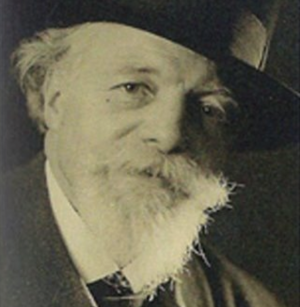Eugène Villon ( - )

Born in The Hague to a French father and Dutch mother, he first lived in Holland, where he studied painting and drawing. His family then moved to Nice, where he studied under Auguste Clément and Joseph Herst at the Ecole des Beaux Arts. A gifted pupil of the Flemish school, he received his first commission at the age of sixteen, when he was asked to decorate the mural of Geneva's grand theater.
Eugène Villon moved to Lyon around 1900, where he was initially an excellent studio painter, and a keen watercolorist. He researched and perfected his own unique process, which enabled him to give his watercolors the power of oil. Eugène Villon made watercolor his medium; he knew how to master effects and rediscover transparencies.
He spent time in the Maghreb, where he excelled in evoking souks and mosques, as well as in Amsterdam, Brussels, Bruges, Strasbourg, Venice and Nice. He travelled to North Africa, but also to many regions of France, including Brittany, Corsica, the Midi, Savoy and Auvergne.
Highly appreciated, he exhibited regularly at the Société Lyonnaise des Beaux-Arts, where he was a member of the jury from 1913 to 1945. In 1926, he joined the SLBA's board of directors, becoming vice-president in 1939, a position he held until 1944.
Like many Lyonnais artists, Eugène Villon exhibited in the capital. In 1907, he exhibited at the Grand Palais, as part of the Salon de la Société des Artistes Français, of which he became an associate member. He was also a member of the Société des Orientalistes, where he exhibited from 1910 to 1943.
Eugène Villon, Officer of Public Instruction and Officer of the Academy, was made a Knight of the Legion of Honor in 1937. The award was presented to him by President Albert Lebrun.
In 1951, he died in great glory, leaving a considerable body of work comprising paintings, watercolors, engravings and drawings.